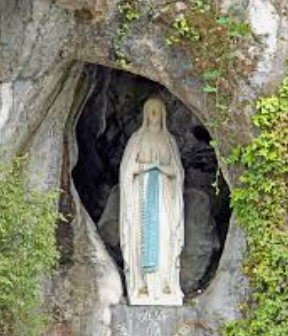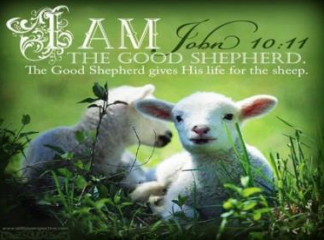







| What is the Bible? |
|
| The Bible, also called the Scriptures or the Sacred Scriptures, is a collection of books written by human authors inspired by God. They are an account of God’s revelation and plan of salvation for the human race. The Bible is made up of seventy-three books and is divided into two sections: the Old Testament and the New Testament.The books of the Bible are written in several different literary forms. It is as important to recognize different literary forms when reading the Bible as it is to recognize different forms of writing in a newspaper. For example, when reading the paper, we have to know if we are reading an editorial or news story or an advertisement. What is the Old Testament? The Old Testament, or Hebrew Scriptures, is a record of God’s relationship with the Israelites, the “Chosen People.” Written between 900 B.C. and 160 B.C. the forty-six books of the Old Testament can be divided into four sections: the Pentateuch, the Historical Books, the Wisdom Books, and the Prophetic Books. Much of the Old Testament is influenced by the literature of Israel’s neighbors in the Middle East. To tell their own story, the Israelites borrowed from the cultures of the surrounding peoples and imitated the forms of their literature. What is the Pentateuch? The Pentateuch is the first five books of the Old Testament, namely:
Many well known Bible stories are found in these books including the stories of Creation, Adam and Eve, Noah’s Ark as well as other stories which tell of the origins of the Israelite people and their escape under the leadership of Moses from slavery in Egypt . The Ten Commandments and other laws governing the life and worship of the Israelite people are also found in the Pentateuch. Hence, the other name for this section of the Old Testament is the Law or the Torah. What are the Historical Books? The Historical Books are exactly what you would expect them to be, a history of the Israelite people and of God’s intervention in their history. They include: |
|
|
|
| Stories of many well known men and women from Israelite history can be found in these books, including King David and King Solomon as well as Deborah, Judith and Queen Esther. The Historical Books reveal an interesting pattern in the relationship between God and his Chosen People. When the people are faithful to God and the law they are prosperous and God protects them from their enemies. When the people worship false gods and live immorally, in effect, saying to God, “We don’t need you,” disaster in one form or another overtakes them. What are the Wisdom Books? There are seven Wisdom books that are quite diverse in literary style and content. They include the Psalms, which are prayers written in poetic form. There are books about how to lead a successful life, like Proverbs and Sirach. The Song of Songs, one of the most sensual love poems ever written, gives us a sense of God’s great love for his people. The Wisdom Books are:
What are the Prophetic Books? The Prophetic Books contain the writings of Israel’s great prophets. The role of the prophets was to keep the Chosen People faithful to the covenant they had made with God and to call them back when they strayed. These powerful writings richly describe the rewards of faithfulness and the punishments of betrayal. Additionally and mysteriously, the prophetic books foretell the coming of the Messiah and give information about him. Jesus’ birth in Bethlehem to a virgin, his ministry to the poor, the downtrodden and the sick, and his violent death are all foretold in the prophetic books. The Prophetic Books include: |
|
|
|
| What is the New Testament?
The New Testament is composed of twenty-seven books which were written in Greek between 50 A.D. and 140 A.D. It consists of the Gospels, the Acts of the Apostles, the Epistles or Letters and the Book of Revelation. The central theme of the New Testament, or Christian Scriptures, is Jesus Christ; his person, his message, his passion, death and resurrection, his identity as the promised Messiah and his relationship to us as Lord and brother. Why was the New Testament written in Greek? The New Testament was written in Greek because it was the most commonly spoken language of the Mediterranean world. What are t he Gosp els? The word gospel comes from the Old English word god-spel which means good news. There are four Gospels. Each Gospel is an account of the life, teachings, suffering, death and resurrection of Jesus Christ. The Gospels are:
The gospels of Matthew, Mark, and Luke together are referred to as the synoptic gospels. “Synoptic” is derived from a Greek word meaning “one eye,’ because these gospels look alike in structure and content. The Gospel of John, while not in conflict with the synoptic gospels, differs in structure and contains some stories and sayings of Jesus that are not found in them. Many familiar Bible stories about Jesus can be found in the gospels, including the story of his birth in Bethlehem, the many stories about his healing of the sick, and parables like the story of the Prodigal Son. What is the Acts of the Apostles? The Acts of the Apostles was written by St. Luke about 70 A.D. to 75 A.D. It describes the faith, growth and way of life of early Christianity. The story of the Ascension of Jesus into heaven, the coming of the Holy Spirit to the church at Pentecost, the martyrdom of St. Stephen and the conversion of St. Paul can all be found in this book. What are the Epistles? The Epistles or Letters make up the largest part of the New Testament. They are usually divided into two categories: the Pauline Letters and other Apostolic Letters. All the letters follow the format of letter writing in the ancient world. Each letter usually begins with a greeting and an identification of the sender and the recipients. This is followed by a prayer, usually in the form of a thanksgiving. The body of the letter is an exposition of Christian teaching, usually responding to the circumstances of the recipients. It may be followed by a discussion of the author’s future travel plans and conclude with practical advice and a farewell. The Pauline Letters were written by St. Paul or one of his disciples; not long after the death and resurrection of Jesus, between 54 A.D. and 80 A.D. They indicate early developments of Christian theology and practice. Included in the Pauline Letters are: |
|
|
|
The Apostolic Letters are thought to be addressed, not so much to a particular community or individual, but to a more universal audience. They were written by various authors between 65 A.D. and 95 A.D. The Apostolic Letters are:
What is the Book of Revelation? The final book of the New Testament , the Book of Revelation, was written sometime after 90 A.D. In highly symbolic terms it presents the struggle between the church and the forces of evil and the eventual triumph of Jesus Although it contains some dreadful warnings about the future, it is essentially a message of hope to the church. |
|
| This response written by Mary Ann Strain, C.P Passionist Missionaries of Union City, NJ, USA and found on the “Ask a Catholic” website Why Are Catholic Bibles Different? Some books of the Catholic Bible aren’t in the Protestant Bible. Did the Catholic Church add things to the Bible? No ! In fact, the opposite is true: Protestant reformers rejected some parts of the Bible. When I was entering the Catholic Church, I was confused by the fact that Protestants used a slightly different Bible. Why wasn’t there just one Bible? This article looks at this issue of why the list of books of the Catholic Bible is slightly different. The answer… …is history! The Old Testament canon The accepted list of books in the Bible is called the “canon.” The canon of the Old Testament books of the Catholic Bible is based on history. We didn’t make up the list! At the time of Jesus, there was no official canon of the books of the Old Testament. The process of defining that canon was not yet complete, and there were a few different collections of Scripture in circulation among the Jews. The two most widely accepted collections of Old Testament writings at that time were:
Jesus and his Apostles knew and used the Septuagint most heavily. The authors of the New Testament’s books also quoted directly from the Septuagint most of the time, since this version was the most commonly used in the early Church. Precisely because the Septuagint was the version most used and accepted by Jesus and the Apostles, the Catholic Church uses the Septuagint’s canon of Old Testament books in the Roman Catholic Bible. The list of the Old Testament books of the Catholic Bible is firmly grounded in history. The New Testament canon Defining the canon of the New Testament books of the Catholic Bible was a somewhat different story.
Although the question was a little different, the process of deciding was the same as that used to decide the Old Testament canon. Soon after Jesus’s death, a number of books and letters circulated that claimed to contain the teachings of Jesus and the Apostles. In the early Church, it fell to the bishops, as successors of the Apostles, to determine which books accurately contained the true teachings. In fact, all of the New Testament books of the Catholic Bible were selected because the Church’s bishops agreed that those books alone were divinely inspired, accurate teachers of the true faith received from Jesus and the Apostles. Some of the books and letters quickly gained acceptance as being faithful, accurate, and inspired by the Holy Spirit. The bishops quickly rejected other books circulating at the time because they contained obvious fabrications and inaccuracies. A few books continued to be debated for some time. Although ultimately accepted into the canon of Scripture, these are also called deuterocanonical because they were accepted later (although written at the same time as the other canonical books). The deuterocanonical books of the New Testament are:
Catholics hold that all of the books of the Catholic Bible — both Old and New Testament, both the deuterocanonical and “protocanonical” ones (first canon) — are the divinely inspired Word of God. This is the full list of the New Testament books of the Catholic Bible:
Defining the canon It took a few hundred years to complete this process of officially defining the Christian canon of both the Old and Testament. During that time, the bishops discussed and debated the matter with each other to determine whether the deuterocanonical texts accurately reflected the teachings of Christ, and whether they contained the inspired Word of God. Although there was no official canon during this early period in the Church, the vast majority of the the books of the Catholic Bible were already recognized as being authentic Scripture. The Church, through its bishops, verified and defined the canon of the Bible. In fact, Catholics see this as an outstanding illustration of the Catholic teaching that the Holy Spirit actively leads and guides the bishops of the Church in a special way: we can rely on the accuracy of the Bible only to the extent that we can rely on the divine guidance of the Church. Pope Damasus I gathered a representation of bishops from the Christian world (called a synod ) in 382 A.D. to define the canon of Scripture for the whole Church. This canon was ratified by numerous other Popes, synods, and Church Councils. That canon is what we use today — all the books of the Catholic Bible. What books of the Catholic Bible do Protestants reject? Protestants reject the deuterocanonical books of the Old Testament as being not divinely inspired. Although Martin Luther and other Reformation leaders also rejected the New Testament deuterocanon, they ultimately retained these New Testament books in the Protestant version of the Bible. Luther and other Protestant leaders rejected many Church teachings and Traditions. Their rejection of the deuterocanonical books allowed them to claim that the disputed doctrines had no basis in Scripture — their new canon of Scripture! The canon We Catholics don’t think of the deuterocanon as “extra” books of the Catholic Bible! To us, it’s all “the Bible.” Our use of these books is historically based on the fact that Jesus and the Apostles used the Greek Septuagint most often. And it’s ultimately determined by the Church’s judgment that these books are all divinely inspired — a decision that we are confident was guided by the Holy Spirit during the first centuries of the Church. The books of the Catholic Bible are the books that all Christians traditionally accepted. We can’t change that historical fact just because some reformers rejected parts of the Bible during the Protestant Reformation in the 1500s. See the main article on Catholic Questions for more issues, or check our home page for other articles about the Catholic faith! From beginningCatholic.com 2006 |
Five Easy Ways to Understand the Bible
The Scriptures are a diverse compilation of writings encompassing a few thousand years of human history. Here are 5 ways to help make the Bible easier for you to understand.
1. Understand what the author intended
The stories in Scripture take place within a particular time and context. The authors faced similar circumstances as our own, but within their own historical context. Many New Testament books (such as the Gospels) were written to specific Christian communities addressing their particular needs.
Find a good resource on the historical context in which the particular book you are reading took place. A good Bible will have some introductory text explaining:
who did the writing,
to whom it was written,
and the situation in which it was written.
2. Be open to the message
Read from the Scriptures, not into the Scriptures. Let God try to communicate to you what he wants you to know. It’s easy to fall into a habit of reading a preconceived notion into a passage to fit our own ideology, but a more fruitful way is to let the Scriptures speak to us.
3. Take time to reflect
Proper understanding comes through allowing yourself some time to think about what you read. Meditate on it. Think of how it might apply to your life. What is God trying to communicate to you through that passage?
Some in-depth questions might be:
What does this text tell me about God?
What does this text tell me about the people of God?
What does this text tell me about myself?
4. Read it more than once
Something as rich and vast as the word of God does not always make sense on the first try. Re-read it as many times as you need to help unfold the various dynamics that might be taking place.
5. Form a Bible study group
Reading the Scriptures in a group allows for a chance to discuss it and hear how God is revealing himself to other people. In fact you might learn how God is revealing himself to you through your discussion with another person!
Good discussion will also allow for chances to reflect and an opportunity for everyone to share if so desired. By Jon Jakoblich







